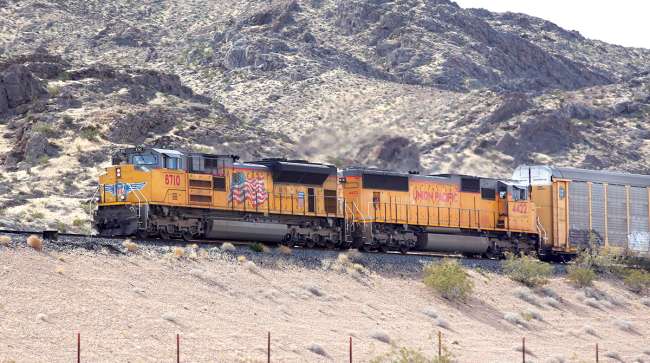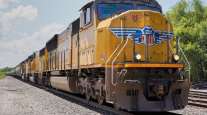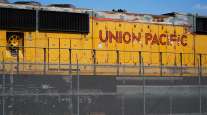Senior Reporter
Union Pacific Reports Record 2Q Earnings

[Stay on top of transportation news: Get TTNews in your inbox.]
Union Pacific Corp. reported record 2019 second-quarter income of $1.57 billion, or $2.22 a share, July 18. This compares with $1.5 billion, or $1.98 per share, in second-quarter 2018.
The railroad reported its operating revenue declined 2% year-over-year to $5.59 billion, compared with $5.67 billion one year ago.
Omaha, Neb.-based Union Pacific’s operating ratio was a record 59.6. Operating ratio is a company’s operating expenses as a percentage of its revenue, and it is used to determine efficiency. The lower the ratio, the greater the company’s ability to generate a profit.
As recently as late January, company officials said the ratio was too high. A goal had been set to lower it to below 61 in 2019 and less than 60 by 2020. Then Union Pacific announced it would become more efficient on how many locomotives it operates, and the company planned to better manage the number of employees it has on the payroll.
“We delivered record second-quarter financial results driven by exceptional operating performance, including an all-time best quarterly operating ratio of 59.6 percent,” CEO Lance Fritz said. “These results are a testament to the dedication of the men and women of Union Pacific, who are embracing Unified Plan 2020 and who worked closely with our customers to overcome numerous weather challenges.”
Unified Plan 2020 implements Precision Scheduled Railroading principles, which were created by the late Hunter Harrison to optimize operations. The plan, launched last fall, is being rolled out in phases across the Union Pacific rail network.
Union Pacific had significant savings in several areas including compensation and benefits, purchased materials, fuel and equipment, and rentals, which lowered its total operating expenses by 7% to $3.33 billion, compared with $3.57 billion in the same period in 2018.
The company’s freight car velocity, which is a measurement of time and distance a railcar travels, and at what speeds, increased to 195 daily miles, a 4% improvement from the same period a year ago.




